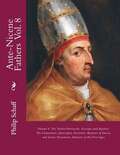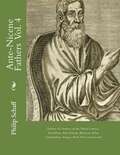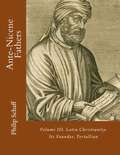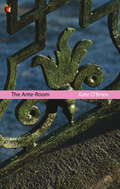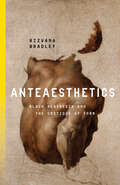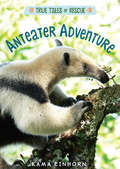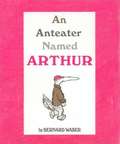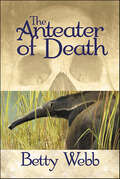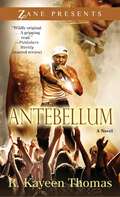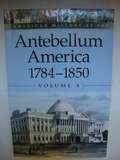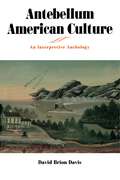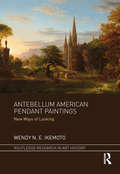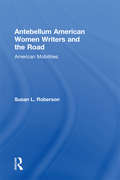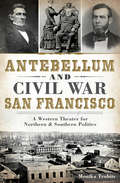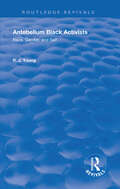- Table View
- List View
Ante-nicene Fathers: Volume 8. The Twelve Patriarchs, Excerpts And Epistles, The Clementina, Apocrypha, Decretals, Memoirs Of Edessa And Syriac Documents, Remains Of The First Ages (Ante-nicene Fathers Ser. #8)
by Philip Schaff Arthur CoxeVolume 8: The Testaments of the Twelve Patriarchs Excerpts of Theodotus Two Epistles Concerning Virginity Pseudo-Clementine Literature Apocrypha of the New Testament The Decretals Memoirs of Edessa And Other Ancient Syriac Documents Remains of the Second and Third Centuries
Ante-nicene Fathers: Volume IV: Fathers Of The Third Century: Tertullian, Part Fourth, Minucius Felix, Commodian, Origen, Parts First And Second (Ante-nicene Fathers Ser. #4)
by Philip Schaff Arthur CoxeVolume IV. Fathers of the Third Century: Tertullian, Part Fourth, Minucius Felix, Commodian, Origen, Parts First and Second
Ante-nicene Fathers: Volume 7. Fathers Of The Third And Fourth Centuries: Lactantius, Venantius, Asterius, Victorinus, Dionysius, Apostolic Teaching And Constitutions, Homily (Ante-nicene Fathers Ser.)
by Philip Schaff Arthur CoxeThe genius of Lactantius suffers a sad transformation when unclothed of vernacular and stripped of the idiomatic graces of his style. But the intelligent reader will be sure to compare this translation with the Latinity of the original, and to recur to it often for the enjoyment of its charming rhetoric, and of the high sentiment it so nobly enforces and adorns. This volume will be the favourite of the series with many. The writings of the Christian Tully alone make up more than half of its contents; and it is supremely refreshing to reach, at last, an author who chronicles the triumph of the Gospel [1] over "Herod and Pontius Pilate;" over the heathen in their "rage," and the people in their "vain imaginings;" over "the kings of the earth who stood up, and the rulers who were gathered together against the Lord and against His Christ."
Ante-nicene Fathers: Volume 6. Fathers Of The Third Century: Gregory Thaumaturgus, Dionysius The Great, Julius Africanus, Anatolius And Minor Writers, Methodius, Arnobius (Ante-nicene Fathers Ser.)
by Philip Schaff Arthur CoxeIn this volume a mass of fragmentary material [1] has been reduced to method, and so harmonized as to present an integral result. The student has before him, therefore, (1) a view of the Christian Church emerging from the ten persecutions; (2) a survey of its condition on the eve of that great event, the (nominal) conversion of the empire; (3) an introduction to the era of Athanasius; and (4) a history of events that led to the calling of the first Catholic council at Nicæa.
Ante-nicene Fathers: Volume 5. Fathers Of The Third Century: Hippolytus, Cyprian, Caius, Novatian (Ante-nicene Fathers Ser.)
by Philip Schaff Arthur CoxeThis fifth volume will be found a work complete in itself, simplex et Unum. At first, indeed, it might look otherwise. The formation of Latin Christianity in the school of North Africa seems interrupted by the interpolation, between Tertullian and his great pupil Cyprian, of a Western bishop and doctor, who writes in Greek. A little reflection, however, will suggest to the thoughtful student, that, even if our chronological plan admitted of it, we should divest the works of Cyprian of a very great advantage should we deprive them of the new and all-important light shed upon Cyprian and his conflicts with Stephen by the discovery of the Philosophumena of Hippolytus.
Ante-nicene Fathers: Volume III. Latin Christianity: Its Founder, Tertullian (Ante-nicene Fathers Ser. #3)
by Philip Schaff Alexander Roberts James Donaldson Arthur CoxeVolume III. Latin Christianity: Its Founder, Tertullian
Ante-nicene Fathers: Volume I. Apostolic Fathers With Justin Martyr And Irenaeus (Ante-nicene Fathers Ser.)
by Philip Schaff Alexander Roberts James Donaldson Arthur CoxeThis volume, containing the equivalent of three volumes of the Edinburgh series of the Ante-Nicene Fathers, will be found a library somewhat complete in itself. The Apostolic Fathers and those associated with them in the third generation, are here placed together in a handbook, which, with the inestimable Scriptures, supplies a succinct autobiography of the Spouse of Christ for the first two centuries. No Christian scholar has ever before possessed, in faithful versions of such compact form, a supplement so essential to the right understanding of the New Testament itself. It is a volume indispensable to all scholars, and to every library, private or public, in this country.
Ante-nicene Fathers: Volume II. Fathers Of The Second Century: Tatian, Theophilus Of Antioch, Athenagoras Of Athens, Clement Of Alexandria (Ante-nicene Fathers Ser.)
by Philip Schaff Alexander Roberts James Donaldson Arthur CoxeThe series was originally published between 1867 and 1873 by the Presbyterian publishing house T. & T. Clark in Edinburgh under the title Ante-Nicene Christian Library (ANCL), as a response to the Oxford movement's Library of the Fathers which was perceived as too Roman Catholic. The volumes were edited by Rev. Alexander Roberts and James Donaldson. This series was available by subscription, but the editors were unable to interest enough subscribers to commission a translation of the homilies of Origen.
The Ante-Room (Virago Modern Classics #295)
by Kate O'BrienIreland, 1880 and a prosperous, provincial family observes the three great autumnal feasts of the Church. As Teresa Mulqueen lies dying, her family gather round her and beneath this drama another, no less poignant, unfolds. Unmarried daughter Agnes awaits the return of her sister Marie-Rose and brother-in-law Vincent. She adores her sister, but secretly, pasionately, loves Vincent. And their marriage, she knows, is unhappy...Ahead lies a terrible battle between her uncompromising faith and the intensity of her love. In this delicately imagined novel, originally published in 1934, Kate O'Brien lays bare the struggles between personal need and the Catholic faith with the sympathy and insight which is the hallmark of her craft.
The Ante-Room
by Kate O'BrienIreland, 1880 and a prosperous, provincial family observes the three great autumnal feasts of the Church. As Teresa Mulqueen lies dying, her family gather round her and beneath this drama another, no less poignant, unfolds. Unmarried daughter Agnes awaits the return of her sister Marie-Rose and brother-in-law Vincent. She adores her sister, but secretly, pasionately, loves Vincent. And their marriage, she knows, is unhappy...Ahead lies a terrible battle between her uncompromising faith and the intensity of her love. In this delicately imagined novel, originally published in 1934, Kate O'Brien lays bare the struggles between personal need and the Catholic faith with the sympathy and insight which is the hallmark of her craft.
Ante Up (Dreamspun Beyond #8)
by Kim FieldingLove is a high-stakes game. A century and a half ago, Ante Novak died on a Croatian battlefield—and rose three days later as a vampire. Now he haunts Las Vegas, stealing blood and money from drunken gamblers and staying on the fringe of the powerful vampire organization known as the Shadows. His existence feels empty and meaningless until he meets beautiful Peter Gehrardi, who can influence others with his thoughts. An attraction flares instantly, bringing a semblance of life to Ante’s dead heart. But the Shadows want Peter too, and they’re willing to kill to get him. As Ante and Peter flee, they learn more about themselves and each other, and they discover that the world is a stranger place than either of them imagined. With enemies at their heels and old mistakes coming back to exact a price, how can Ante and Peter find sanctuary?
Anteaesthetics: Black Aesthesis and the Critique of Form (Inventions: Black Philosophy, Politics, Aesthetics)
by Rizvana BradleyIn Anteaesthetics, Rizvana Bradley begins from the proposition that blackness cannot be represented in modernity's aesthetic regime, but is nevertheless foundational to every representation. Troubling the idea that the aesthetic is sheltered from the antiblack terror that lies just beyond its sanctuary, Bradley insists that blackness cannot make a home within the aesthetic, yet is held as its threshold and aporia. The book problematizes the phenomenological and ontological conceits that underwrite the visual, sensual, and abstract logics of modernity. Moving across multiple histories and geographies, artistic mediums and forms, from nineteenth-century painting and early cinema, to the contemporary text-based works, video installations, and digital art of Glenn Ligon, Mickalene Thomas, and Sondra Perry, Bradley inaugurates a new method for interpretation—an ante-formalism which demonstrates how black art engages in the recursive deconstruction of the aesthetic forms that remain foundational to modernity. Foregrounding the negativity of black art, Bradley shows how each of these artists disclose the racialized contours of the body, form, and medium, even interrogating the form that is the world itself. Drawing from black critical theory, Continental philosophy, film and media studies, art history, and black feminist thought, Bradley explores artistic practices that inhabit the negative underside of form. Ultimately, Anteaesthetics asks us to think philosophically with black art, and with the philosophical invention black art necessarily undertakes.
Anteater Adventure (True Tales of Rescue)
by Kama EinhornAn up‑close look at what life is like the morning after a terrible hurricane for anteater Abi in this photo‑packed series exploring the stories and science behind animal sanctuaries. Abi takes readers behind the scenes of an anteater sanctuary in Belize in this nonfiction chapter book for elementary‑aged readers. Includes full‑color photos, graphics, and maps.
An Anteater Named Arthur
by Bernard WaberIn a story told through his mother's eyes, Arthur is seen as a sometimes annoying, but always lovable, anteater.
The Anteater of Death: A Zoo Mystery (Gunn Zoo Series #1)
by Betty Webb2009 Winner of the Arizona Book Award for Mystery/SuspenseIf Lucy, the pregnant Giant Anteater from Belize, didn't kill the man found dead in her enclosure at California's Gunn Zoo, who did? Zookeeper Teddy Bentley must find the real murderer before her furry friend is shipped off to another zoo in disgrace.Then another human bites the dust, the monkeys riot, and the wolves go nuts. Things get worse when the snooty folks at Gunn Landing Harbor attempt to evict Teddy from the Merilee, her beloved houseboat.That's just the beginning. Her father, on the lam from the Feds for embezzling millions, gets targeted by a local gangster; and Caro, Teddy's socialite and former beauty queen mother, who loathes Teddy's dangerous job, starts introducing her to eligible bachelors. Then Teddy herself becomes a target for murder.
Anteaters (Nature's Children)
by Lorien KiteIntroduces the reader to anteaters, where they live, what they eat, their young and more.
Antebellum: A Novel
by R. Kayeen ThomasA thought-provoking novel about African American culture seen through the eyes of a famous rapper who is transported to the days of slavery and forced to experience it firsthand.When Da Nigga is sent back in time, he finds himself a slave forced to live the life of his ancestors. A rapper in current time, Da Nigga must confront the reality of the African American experience as slavery challenges everything he holds dear from his fellow rappers and their lyrics, to the executives and their motives. Antebellum is the hard-hitting, gritty story of Da Nigga. From rap superstar to broken slave and back, Antebellum will have readers on the edge of their seats and keep them talking long after they put it down.
Antebellum America: 1784-1850 (American History By Era Series #Volume 4)
by William DudleyThe time between America's independence in 1783 and the year 1850 was an era of remarkable growth in territory and power for the new nation, as well as a time of social ferment and change. <P><P>Americans created a constitutional government, expanded westward, and grappled with the problem of slavery.
Antebellum American Culture: An Interpretive Anthology
by David Brion DavisFirst published in 1979, this volume offers students and teachers a unique view of American history prior to the Civil War. Distinguished historian David Brion Davis has chosen a diverse array of primary sources that show the actual concerns, hopes, fears, and understandings of ordinary antebellum Americans. He places these sources within a clear interpretive narrative that brings the documents to life and highlights themes that social and cultural historians have brought to our attention in recent years. Beginning with the family and the issue of socialization and influence, the units move on to struggles over access to wealth and power; the plight of "outsiders" in an "open" society; and ideals of progress, perfection, and mission. The reader of this volume hears a great diversity of voices but also grasps the unities that survived even the Civil War.
Antebellum American Culture: An Interpretive Anthology
by David Brion DavisFirst published in 1979, this volume offers students and teachers a unique view of American history prior to the Civil War. Distinguished historian David Brion Davis has chosen a diverse array of primary sources that show the actual concerns, hopes, fears, and understandings of ordinary antebellum Americans. He places these sources within a clear interpretive narrative that brings the documents to life and highlights themes that social and cultural historians have brought to our attention in recent years. Beginning with the family and the issue of socialization and influence, the units move on to struggles over access to wealth and power; the plight of "outsiders" in an "open" society; and ideals of progress, perfection, and mission. The reader of this volume hears a great diversity of voices but also grasps the unities that survived even the Civil War.
Antebellum American Pendant Paintings: New Ways of Looking (Routledge Research in Art History)
by Wendy N. IkemotoAntebellum American Pendant Paintings: New Ways of Looking marks the first sustained study of pendant paintings: discrete images designed as a pair. It opens with a broad overview that anchors the form in the medieval diptych, religious history, and aesthetic theory and explores its cultural and historical resonance in the 19th-century United States. Three case studies examine how antebellum American artists used the pendant format in ways revelatory of their historical moment and the aesthetic and cultural developments in which they partook. The case studies on John Quidor’s Rip Van Winkle and His Companions at the Inn Door of Nicholas Vedder (1839) and The Return of Rip Van Winkle (1849) and Thomas Cole’s Departure and Return (1837) shed new light on canonical antebellum American artists and their practices. The chapter on Titian Ramsay Peale’s Kilauea by Day and Kilauea by Night (1842) presents new material that pushes the geographical boundaries of American art studies toward the Pacific Rim. The book contributes to American art history the study of a characteristic but as yet overlooked format and models for the discipline a new and productive framework of analysis focused on the fundamental yet complex way images work back and forth with one another.
Antebellum American Women Writers and the Road: American Mobilities (Routledge Studies In Nineteenth Century Literature Ser. #5)
by Susan L. RobersonA study of American women’s narratives of mobility and travel, this book examines how geographic movement opened up other movements or mobilities for antebellum women at a time of great national expansion. Concerned with issues of personal and national identity, the study demonstrates how women not only went out on the open road, but participated in public discussions of nationhood in the texts they wrote. Roberson examines a variety of narratives and subjects, including not only traditional travel narratives of voyages to the West or to foreign locales, but also the ways travel and movement figured in autobiography, spiritual, and political narratives, and domestic novels by women as they constructed their own politics of mobility. These narratives by such women as Margaret Fuller, Susan Warner, and Harriet Beecher Stowe destabilize the male-dominated stories of American travel and nation-building as women claimed the public road as a domain in which they belonged, bringing with them their own ideas about mobility, self, and nation. The many women’s stories of mobility also destabilize a singular view of women’s history and broaden our outlook on geographic movement and its repercussions for other movements. Looking at texts not usually labeled travel writing, like the domestic novel, brings to light social relations enacted on the road and the relation between story, location, and mobility.
Antebellum and Civil War San Francisco: A Western Theater for Northern & Southern Politics (Civil War Ser.)
by Monika TrobitsWhen Americans migrated westward, they took their politics with them, making San Francisco a microcosm of the nation as the Civil War loomed. Spurred by the promise of gold, hungry adventurers flocked to San Francisco in search of opportunity on the eve of the Civil War. The city flourished and became a magnet for theater. Some of the first buildings constructed in San Francisco were theater houses, and John Wilkes Booth&’s famous acting family often graced the city&’s stages. In just two years, San Francisco&’s population skyrocketed from eight hundred to thirty thousand, making it an &“instant city&” where tensions between transplanted Northerners and Southerners built as war threatened the nation. Though seemingly isolated, San Franciscans took their part in the conflict. Some extended the Underground Railroad to their city, while others joined the Confederate-aiding Knights of the Golden Circle. Including a directory of local historic sites and streets, author Monika Trobits chronicles the dramatic and volatile antebellum and Civil War history of the City by the Bay. Includes photos
Antebellum at Sea: Maritime Fantasies in Nineteenth-Century America
by Jason BergerIn the antebellum years, the Western world&’s symbolic realities were expanded and challenged as merchant, military, and scientific activity moved into Pacific and Arctic waters. In Antebellum at Sea, Jason Berger explores the roles that early nineteenth-century maritime narratives played in conceptualizing economic and social transitions in the developing global market system and what these chronicles disclose about an era marked by immense change.Focusing on the work of James Fenimore Cooper and Herman Melville, Berger enhances our understanding of how the nineteenth century negotiated its own tenuous progress by portraying how a wide range of maritime stories lays bare disturbing experiences of the new. Berger draws on Slavoj Žižek&’s Lacanian notion of fantasy in order to reconsider the complex way maritime accounts operated in the political landscape of antebellum America, examining topics such as the function of maritime labor know-how within a transformation of scientific knowledge, anxiety produced by conflict between gender-specific and culture-specific forms of enjoyment, and how legal practices illuminate troubling juridical paradoxes at the heart of Polk-era political life.Addressing the ideas of the antebellum age from unexpected and revealing perspectives, Berger calls on the conception of fantasy to consider how antebellum maritime literature disputes conventional views of American history, literature, and national identity.
Antebellum Black Activists: Race, Gender, and Self
by R. J. YoungFirst published in 1996. In this volume the author has collected several published works to explore the ideas of manhood in America, Sojourner Truth, ties of ordinary blacks to those still in slavery and a study of the Northern African American community; new information on black activities in Canada and begins with an essay on the five elements of black community activity before the Civil War: churches, newspapers, conventions, organizations, and emigration which looks at of these "platforms for change" going through developmental stages from experimentation, adjustment and reaching maturity in the 1850’s.
